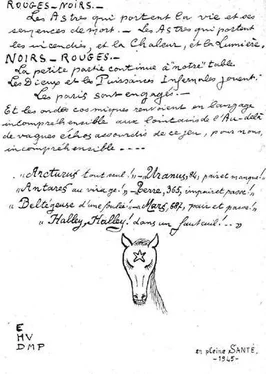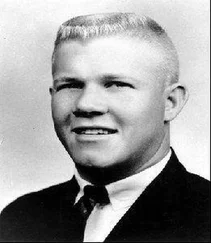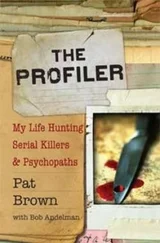But Eustache did not arrive at the designated time, Maurice said, and so he went to dine with his brother at rue Caumartin and then afterward to a vaudeville show at the A.B.C. on the Grands Boulevards. Later, at the Hôtel Alicot, Maurice said, he learned that Eustache had not shown up at the rendezvous because his truck had been involved in an accident.
Massu interrupted to ask if Maurice had been to 21 rue Le Sueur at any point during this trip to Paris.
“I did go to rue Le Sueur,” Maurice now admitted, but he had not entered the house. He said that he had to return a set of keys to his brother—a statement that Massu thought had been uttered accidentally. It certainly did not help his claims about not knowing much about the building.
“I should tell you,” Maurice added, “that in the truck were about thirty bags of coal which were supposed to be returned to Auxerre.” After the accident, Maurice said that he had offered to allow Eustache to store this cargo at his brother’s town house at rue Le Sueur while they waited on repairs or the arrival of a new vehicle. He had not mentioned this incident earlier, he said, because he could not have imagined that it could have had any significance for the investigation.
As for his brother’s whereabouts, Maurice said that he did not know. He had not received any news and could only guess, envisioning three possibilities: he was hiding out with the Resistance, he had taken flight abroad, or he had committed suicide.
Massu asked an officer to lead Maurice into a holding cell. How long would he be held? he asked.
“As long as I am permitted by law.” Massu needed to follow up on details, which “however unimportant for you, are essential for the investigation.” Maurice Petiot, protesting his innocence, was led away.
At this time, almost midnight, Massu returned home. Bernard, he knew, would still be awake, studying in his room and waiting to hear the latest news about the case. Massu felt that they were approaching a major breakthrough. That night, he and Bernard discussed serial killers. Petiot had not killed over a long period of time like Henri Landru, the commissaire said. Instead Petiot had attempted too much too soon, and as a result, his killing spree had lasted only a short while. Massu, clearly, had a lot to learn about this case.
10.
“GOODBYE ARROGANCE”
AFTER HAVING HAD THE LEISURE TO STUDY THE DEPTH OF HIS THOUGHT, I AM CONVINCED THAT HIS GREATEST PLEASURE WAS TO PLAY WITH OTHER PEOPLE’S MINDS.
—René Nézondet on Marcel Petiot
PROFILING—the practice of drawing up a psychological portrait of a criminal based on behavioral clues and evidence—was not used in this murder investigation or in any other during the Occupation. Although already occasionally employed, most famously in Walter Langer’s profile of Adolf Hitler for the Office of Strategic Services (OSS) in 1943, profiling’s heyday would come much later. The FBI’s elite Behavioral Science Unit, which opened in 1972 in Quantico, Virginia, would have many first-rate identifications—a success popularized in Thomas Harris’s harrowing 1988 novel The Silence of the Lambs and the subsequent film starring Anthony Hopkins as Dr. Hannibal Lecter.
A veteran of this unit, Special Agent John Douglas, widely regarded as the basis for the fictional detective Jack Crawford in the Harris novel, described what he referred to as the “homicidal triad” of behaviors that suggest future violent crime—namely, cruelty to small animals, bedwetting at a late age, and arson. Two of these applied to Marcel Petiot. And the third was not far off. Police already knew of the fire at the dairy following the murder of its owner, Petiot’s patient and possible mistress, Henriette Debauve. They would also soon learn that, not long after the disappearance of another lover, Louisette Delaveau, a mysterious fire had destroyed the home of her former employer.
The French police continued the difficult task of trying to understand this man. Detectives searched banks and insurance companies to find his account and look for any suspicious transactions. They solicited information from government agencies overseeing hospitalizations, accidents, prisons, and passports, the latter under his name as well as several others, such as his wife’s maiden name, Lablais. Detectives continued to speak with neighbors, while also staking out the auction houses Petiot liked to frequent, the train stations he might use to flee Paris, and the various properties he owned around the city. The only visitor they noted was a forty-eight-year-old woman named Marie Julienne Le Roux. She had come to clean Petiot’s office.
When questioned, Le Roux told inspectors that she worked at rue Caumartin weekday mornings from ten to twelve and then again in the afternoons from two thirty to five thirty, with an additional short shift on Saturday mornings. During this time, she would receive patients, which, she confirmed, included more women than men. She also cleaned the apartment and office—everything, that is, except for the linen, which Georgette Petiot preferred to wash herself. Le Roux had not seen Dr. Petiot since her shift Friday night.
On Saturday, March 11, 1944, when she worked the morning as usual, Petiot had not arrived. “I have never noticed anything suspicious either in his office or his X-ray rooms,” Le Roux said. Her testimony, though, was of limited value because she had worked in Petiot’s office for only three weeks.
There was another woman, however, who might have more valuable information for the investigation; this was Geneviève Cuny, who had worked in Dr. Petiot’s office and household for a couple of years. She was no longer at rue Caumartin and, apparently, not in Paris either. Massu sent detectives to find this woman.
BY March 16, 1944, when Massu called in Maurice Petiot for another interrogation, Inspector Battut and several detectives from the Brigade Criminelle had searched his property on rue du Pont. They had gone through the ground floor with its electronics boutique, the dining room, and the kitchen, followed by the cellar and the three bedrooms on the top floor. As the police report of the search summed it up, they found “nothing suspicious.”
The detectives had also searched Maurice’s property on rue Sous-Murs. At first, they found mainly tools, firewood, and more antique furniture. Then, in one of the bedrooms, an inspector discovered a curious locked cupboard. After locating the key in a drawer, he opened it and found a number of papers belonging to Dr. Petiot: a diploma, an insurance policy, acts of sale for a couple properties, two address books, and the identity card of the late French actor Harry Bauer. A closet in the room also contained an astrakhan coat, two furs, and several other articles of women’s clothing in a small size.
When asked about these discoveries, Maurice said that he had no idea that they were there. He imagined that they had been left a few months before, when Marcel and Georgette had come to Auxerre and stayed several nights in the room. As for Bauer’s identity card, Maurice suggested that it must have been a gift to his brother. Maurice was also still denying any knowledge of lime at rue Le Sueur. This time, however, Massu read aloud the signed testimony of the truck driver Jean Eustache.
Looking him straight in the eye and calmly changing his story again, Maurice admitted that Eustache was correct. According to the account he now told, Maurice had delivered four hundred kilograms of lime to the town house. His brother Marcel had requested the material to “kill the bugs in the attic of rue Le Sueur and to whitewash the façade.” “Goodbye arrogance,” Massu said afterward. Maurice Petiot was another witness “caught in the trap of his own lies.”
Читать дальше












